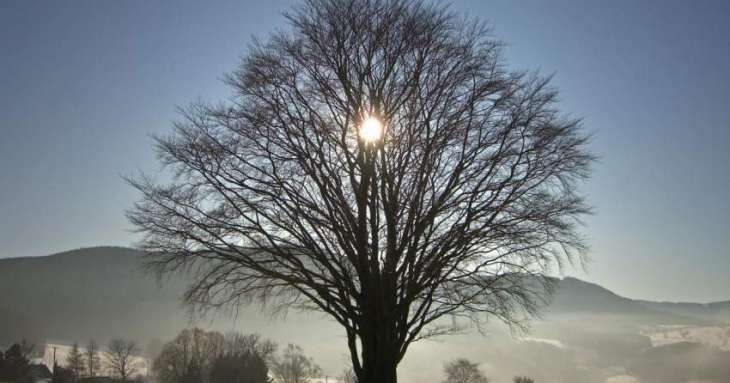A solstice is one of the two days in a year when the Sun at noon reaches its minimum or maximum height above the horizon. There are two solstices during the year, in winter and in summer.
MOSCOW (Pakistan Point News / Sputnik - 21st December, 2018) A solstice is one of the two days in a year when the Sun at noon reaches its minimum or maximum height above the horizon. There are two solstices during the year, in winter and in summer.
On the day of the winter solstice, the Sun reaches its lowest point in the sky.
In the northern hemisphere, the winter solstice, the shortest day and the longest night of the year, occurs on December 21 or 22.
In 2018, the winter solstice will occur on December 21 at 10:23 p.m GMT.
The Sun, moving along the ecliptic, at this moment will reach the most distant position from the celestial equator towards the South Pole.
An astronomical winter will come in the northern hemisphere of the planet, and the summer will come in the southern hemisphere.
Within a few days before and after the solstice, the Sun will "hold this height," as if it has stopped for a while. On the day of the winter solstice, at noon, the lowest position of the Sun over the horizon can be observed in the northern hemisphere.
On this day, the Sun rises in the southeast and sets in the southwest, following the shortest arc-like path across the sky.
These December days, the polar night occurs above the Arctic Circle, above 66.5 degrees north latitude. The polar night does not necessarily mean total darkness during the whole day, its main feature is that the Sun does not rise above the horizon.
At the North Pole, the Sun, as well as the twilight, is not visible and it is possible to find out its location only by constellations. A completely different picture unfolds at the South Pole, where the daylight at this time of the year lasts 24 hours.
On December 21, the Sun begins to rise up the ecliptic, starting the way to the spring equinox, when it crosses the celestial equator.
For thousands of years, the winter solstice was of great importance for all the people of our planet, who lived in harmony with the natural cycles and organized their lives in accordance with them. From the earliest times, people have honored the Sun, realizing that their life on earth depends on its light and heat. For them, the winter solstice represented the victory of light over darkness.
Now, the day will gradually increase, and the night will decrease. People used to predict what the future harvest will be like judging by the winter solstice. In the old days, people believed that frost on the trees meant that the corn harvest would be successful this year.
There was an interesting ceremony in Russia in the 16th century, which was related to the winter solstice. A bell-ringer of the Moscow cathedral, who was responsible for the clock stroke, came to the tsar with a hat in hand. He reported that from now on the Sun had turned for the summer, days were lengthening and nights were shortening. And the tsar used to give the bell-ringer money for the good news.
The ancient Slavs used to celebrate the pagan New Year on the day of the winter solstice. The New Year was associated with the Slavic god of winter - Kolyada. The main attribute of the celebration was fire, representing and calling for the sunlight, which, after the longest night of the year, was supposed to rise higher and higher in the sky. The ritual New Year's cake, karavai, was also shaped like the Sun.
In Europe, a 12-day pagan festival, which was dedicated to the winter solstice and marked the beginning of a new life and the renewal of nature, used to begin these days.
There also was a custom to launch a solar wheel in Scotland on the winter solstice. A barrel was covered with burning tar and pushed down the street. A wheel is the symbol of the Sun, the spokes of the wheel resembled the rays of light, and the rolling made the wheel seem alive and symbolized the Sun.
The winter solstice before all other seasons was designated in China, which has 24 seasons in its Calendar. In ancient China, it was believed that from that time the male force of nature rises and a new cycle begins. The winter solstice was considered a happy day worthy of celebration. Everyone, from an emperor to a commoner, went on vacation on this day. The army was on hold, waiting for orders, shops were closed and people went to visit and give presents to each other.
The Chinese offered sacrifices to the sky god and ancestors, and also ate mashed beans and sticky rice to protect themselves from evil spirits and diseases. The winter solstice is still considered one of the traditional Chinese holidays.
In India, the winter solstice, Makar Sankranti, is celebrated in Hindu and Sikh communities, where bonfires are lit on the night before the celebration. The heat from bonfires symbolizes the heat of the Sun, which begins to warm the earth after the winter cold.




